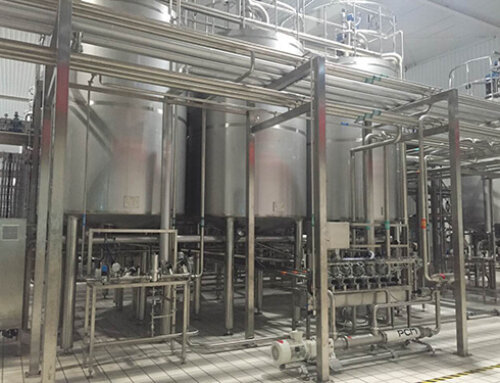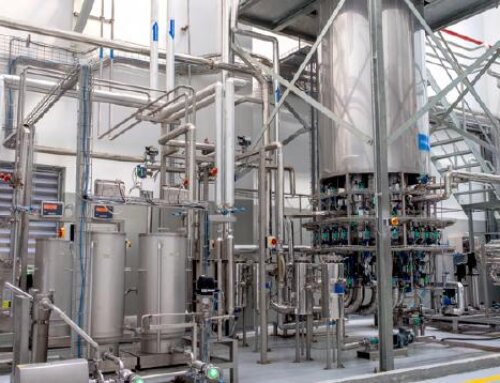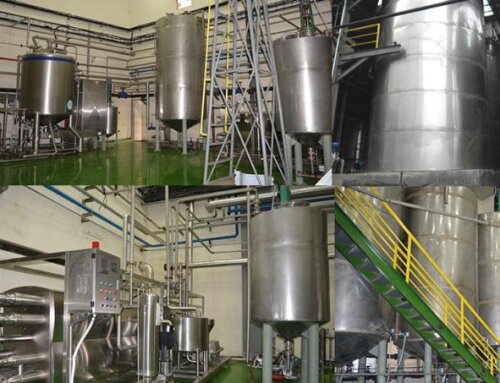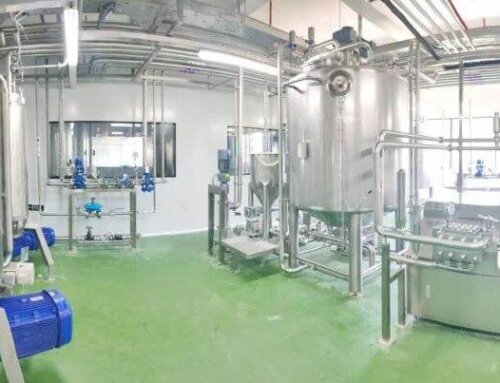Fruit and vegetable processing is through various processing technology, so that fruits and vegetable products have a long shelf life and eat or drink at any time. During the processing, it is necessary to preserve the nutrients to the greatest extent, improve the edible value, and make the processed products have good color, aroma and taste. Further improve the commercialization level of processed fruit and vegetable products. In the process of fruit and vegetables, a large amount of waste is often generated, such as fruit peel, core, seeds, leaves, stems, flowers, roots, etc., which also contain valuable wealth. No-waste and by-products development has become more and more popular in the international fruit and vegetable processing industry. Take citrus processing as an example. When we produce citrus juice, citrus by-products such as citrus peel can be dried as medicinal materials, and citrus oil can be extracted for use as food additives or daily chemicals. Citrus seeds and pomace can be processed into animal feed.
There are several common methods to process fruits and vegetables:
Fresh Fruit And Vegetable Packing
Fresh fruits and vegetables are graded, sorted, peeled, stalked, cut, trimmed and other process, then packed in containers. Fruits and vegetables are still living, capable of respiration, and are fresh, convenient, and 100% edible. In the past decade or so, this method has been widely used in developed countries, such as carrots, lettuce, cabbage, leeks, celery, potatoes, apples, pears, peaches, strawberries, spinach and other fruits and vegetables. After fruits and vegetables are processed, it is easy to cause problems such as browning, dehydration, softening of tissue structure, and microbial reproduction. Therefore, some measures must be taken during processing, such as refrigeration, packaging, and food additive treatment.

Dried Fruit And Vegetable Chips/Slice Processing
There are many fruits which are suitable for producing into dry fruits slice or chips, like banana, mango, apricot, plum and so on. These fresh fruits after washing and sorting, then use one fruit cutter or slicer to cut fruits into slice or pieces, then using vacuum freeze drying or hot air drying or vacuum belt drying technology to remove the water content in raw fruits, the end dry fruits or fruit slice water content is about 12%-15%.

Fruit And Vegetable Juice Processing
In recent years, the fruit and vegetable juice processing industry has made great progress. With the continuous progress of fruit and vegetable juice processing technology such as UHT sterilization technology, aseptic packaging technology, membrane separation technology, etc., fruit and vegetable juice products are becoming more and more diversified.
The new varieties of processed fruit and vegetable juice products currently include:
Concentrated juice: Fresh fruits or vegetables after washing, sorting, juice extracting, then use the evaporator to concentrate water in juice, then sterilize and filling into an aseptic bag in drums. The concentrated juice has the character of small size, lightweight and long shelf life. It can reduce storage, packaging and transportation costs, so the concentrated juice usually used for exporting in international trade.
NFC fruit and vegetable juice: It is not recovered by adding water to concentrated fruit and vegetable juice, but the fruit and vegetable raw materials are directly sterilized after the juice is taken, and packaged into containers. The fruit and vegetable juice reduces heat treatment time or no heat treatment during processing, so it has high nutrition and good flavor. It is currently the most popular fruit and vegetable juice product on the market.
compound fruit and vegetable juice: Use the characteristics of various fruit and vegetable raw materials to comprehensively modulate nutrition, color and flavor to create a more ideal fruit and vegetable juice product, which retains the dietary fiber in the fruit, and the utilization of raw materials is high.

Solid Fruit And Vegetable Powder Drinks Processing
The fresh fruits or vegetables after pretreatment, juice extraction and concentration, spray drying or freeze-drying technology is used to reduce the moisture content of fruits and vegetables to a certain level (15-25% for fruits and 3-6% for vegetables), and then packaged into container. Fruits and vegetables are dried under freezing and vacuum conditions, and their nutrients, color and flavor are kept to the maximum. Fruit and vegetable powder can also be spray-dried after pulping and homogenizing the raw materials, this process has a low utilization rate of raw materials, high cost and less use in production. There are few varieties of fruit and vegetable powder, mainly pumpkin powder, tomato powder, garlic powder, green onion powder, etc. However, these powder particles are too large and inconvenient to use. In addition, the temperature of the materials during the powder making is too high, which damages the product. The nutrient content, color and flavor, even generate burnt smell. At present, the processing of fruit and vegetable powder is moving in the direction of superfine grinding. After the dried fruits and vegetables are superfinely pulverized, the particles can reach the micron level, which is more convenient to use; its nutrition is easier to digest, absorb, and taste better; the dietary fiber in fruits and vegetables can be used, reducing waste residue, which is in line with today’s food industry environmental protection development direction.

Fermented Fruit and Vegetable Products Processing
Fruit and vegetable fermented products mainly refer to fruit wine and fruit vinegar. Most fruits with high sugar content can be used as fruit wine drinks, such as apples, bananas, grapes, dates, berry fruits, etc. After fresh fruit is squeezed, it is fermented by alcohol and acetic acid, and then undergoes a series of filtration procedures to make a beverage.

Fruit and vegetable pulp/puree processing
Fruit and vegetable pulp/ puree is divided into concentrated puree/paste or single-strength puree according to whether the fruit pulp is concentrated. Most fruits and vegetables can be made into pulp or puree, such as tomato, banana, mango, apple, carrot, kiwi fruit, strawberry, blueberry, passion fruit, guava, etc. Fresh fruits and vegetables after washing, sorting, peeling, pitting, crushing, then pulping and refining to get the fruit puree, then after (concentrating ) homogenizing and sterilizing and filling into containers.

Fruit jam/sauce processing
Fruit jam is a higher viscosity product than fruit puree, and usually, sugar, pectin, acid and other flavors can be added to the fruit puree to make fruit jam. The end products can be filled into glass jars, metal cans and have a long shelf life. Some high pectin fruits like peach, apricot, plum, and berry fruits are suitable for proceeding into fruit jam.
Fruit and vegetable sauce is also from fresh fruit puree, some ingredients like flavor, salt, sugar, vinegar and other additives can be added into the fruit puree, then after mixing, homogenizing and pasteurizing, can be filled into sachets, bottles, cans for consumption. The most common fruit and vegetable sauce are tomato sauce, chili sauce, onion sauce, garlic sauce, applesauce, etc.





